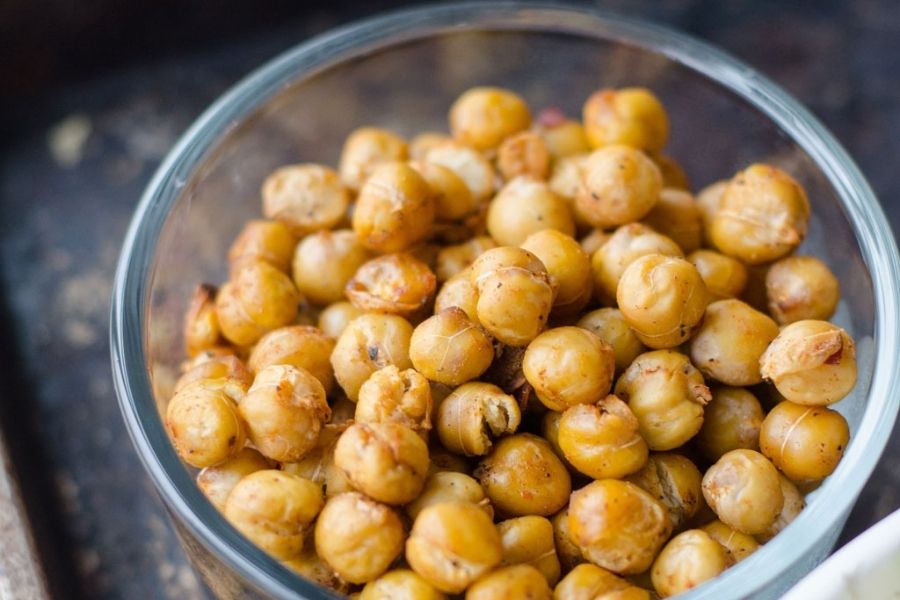Eating right matters a lot for good health, but we have to take greater care while selecting our food during periods. Proper nutrition for your menstrual pain provides relief to your overbearing condition. We must always avoid the food our bodies don’t tolerate well.
Eating food that decreases inflammation in the body will help in managing menstrual cramps. Such foods include fruits, vegetables, whole grains, legumes, nuts, and seeds. Having plant-based foods is highly suggested. It has been observed that animal products and added oils increase the level of estrogen in the body. A low-fat, fiber-rich diet can significantly reduce estrogen levels; thus, it reduces the risk of breast cancer.
Essential Nutrients For Menstrual Pain
1. Iron

Iron is an essential nutrient during menstrual pain. Iron deficiency during the menstruation period causes lower hemoglobin levels, causing nausea, tiredness, vomiting, etc. In heavy blood flow, the body needs extra iron to replace the lost blood cells. The sources are green leafy vegetables (like spinach and broccoli), beans and lentils, peas, tofu, cashews, dates, etc. Therefore, make sure to consume iron during your menstrual cycle.
2. Magnesium

Magnesium helps in calming down the period cramps as it gives relief to the uterine muscles. It balances the mood as well. The sources are green leafy vegetables, nuts, legumes, seeds, and whole grains. 200-360 mg of magnesium doses would suffice for your menstrual pain.
3. Omega-3 Fatty Acids

Researchers have observed lower menstrual pain upon consuming omega-3 fatty acids. It helps relieve the common menstrual period symptoms, including depression and anxiety, due to its anti-inflammatory properties. Flax seeds, algae, and fish oils are sources of omega-3 fatty acids.
4. Calcium

Calcium helps in reducing core PMS (Premenstrual Syndrome) symptoms and their negative effects. It reduces menstrual cramps, fluid retention, mood disorders, and food cravings. Calcium sources include milk, yogurt, beans and lentils, soybean, chickpeas, almonds, nuts, etc.
5. Zinc

Zinc is vital for supporting healthy ovulation and progesterone production. It also supports the immune system. Legumes, seeds, nuts, whole grains, potatoes, and dairy foods are good sources of zinc. Adding zinc to your diet days before your date will help reduce the pain.
6. Vitamin B1 And B6

Vitamin B1 And B6 support healthy progesterone levels. It may help in PMS and reducing pain, cramps, and mood disturbance. Milk, peanuts, soybeans, sweet potatoes, lentils, walnuts, oats are good sources of vitamin B1 And B6
7. Vitamin C

Vitamin C is one of the strongest antioxidants that help fight free radicals. It improves iron absorption and also supports the immune system. Sources of vitamin C are citrus fruits (lemons, oranges), strawberries, gooseberries, pineapples, peppers, etc. Avoid consuming it in excess to prevent vitamin C side effects.
8. Vitamin D

It improves calcium absorption and may help regulate your cycle, relieve muscle pains, improve mood. The sources of vitamin D are pretty limited. An excellent way to get vitamin D is by exposing our skin to sunlight. Other sources include mushrooms and fish oils.
9. Dietary Fibers

Dietary fibers are always an essential part of a healthy diet. For some women, constipation typically happens in the luteal phase; however other women with gut issues, such as irritable bowel syndrome (IBS), can experience chronic constipation throughout their cycle. Dietary fibers improve bowel functions and body detoxification. Good dietary fibers are salads, whole grains, brown rice, nuts, oatmeal, etc.
Managing Premenstrual Syndrome (PMS) Cravings

Women might find that their cravings for certain foods increase for a few (or many) days before the woman’s period begins. The most common culprits are salty foods and sweets. It might lead to too much calorie intake, and excess sodium levels can cause fluid retention.
A few tips which may help to combat the PMS food cravings:
- Have fiber-rich foods.
- Eat smaller but more frequent meals.
- Add protein-rich foods to your diet.
- Drink more water.
A Healthy Diet Chart

With the help of proper nutrition for your menstrual pain, you can manage many issues related to menstruation to a certain extent. Here is a simple diet chart which you can follow to stay healthy in those days.
| Breakfast (8:00-8:30 AM) | Soy Milk (1 glass) + 6 Almonds + 4 Cashews + 4 Raisins + Egg Poach (1)/Bread veg omelette |
| Mid-Meal (11:00-11:30 AM) | 2 Oranges/Lemons/Bananas/Fruits or Fruit Juices |
| Lunch (2:00-2:30 PM) | Parboiled Rice (1/2 cup) + Dal (1/2 cup) + 2 chapati + Paneer Curry (1/2 cup)/green veg/salad-200 gm/curd-100 gm |
| Evening (4:00-4:30 PM) | Aloo Chat with Curd and Boiled Black Chana (1 cup)/soup with butter |
| Dinner (8:00-8:30 PM) | Chapatti (2) + Spinach Curry (1/2 cup)/veg/non veg/dal 1 cup/1/2 brown rice |
| Bedtime (around 10 pm) | Milk (200) with raw turmeric/cardamom pinch-wise |
What We Didn’t Learn In Our School And College

The sad part of the story is that a girl in her adolescence doesn’t receive any proper knowledge about her menstrual cycle, which she faces every month. She learns about this from her friends and women in her family with many hesitations, questions, and fear in her mind. These topics must be discussed and taught as a part of regular study. So that everyone can understand the pain a woman undergoes in her life.







